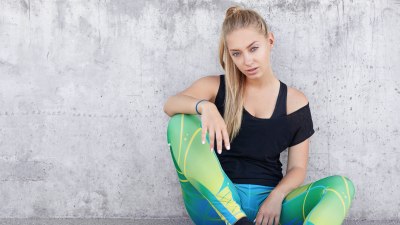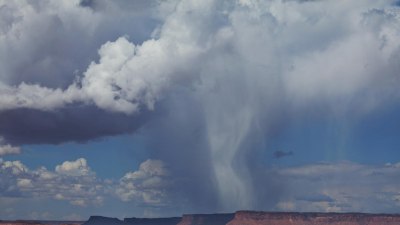What to Wear for a Workout When the Weather Says: Yes, Everything
Discover perfect workout attire for all weather conditions and maximize your performance.

Image by wayhomestudio on Freepik
When it comes to working out, choosing the right outfit is essential for optimum performance and comfort. But what do you wear when the weather says yes to everything? Regardless of whether it's sunny, breezy, cold, or hot, there’s a perfect outfit for you. In this guide, we’ll explore what to wear for your workouts in varying weather conditions, helping you stay comfortable, motivated, and at your best.
Understanding Layering
Layering is the secret weapon for working out in variable weather. It allows you to adjust your clothing according to your body temperature and the prevailing weather conditions. Start with a moisture-wicking base layer, which will help draw sweat away from your skin. This is essential in both warm and cool conditions, as it keeps you dry and comfortable.
Your next layer should be an insulating layer, which can be a lightweight fleece or long-sleeve shirt for cooler weather. For workouts in warmer conditions, you can skip this layer entirely or opt for a lighter, breathable option. Finally, a top layer (such as a windbreaker or waterproof jacket) helps protect you from the elements, making layering a versatile option when preparing to work out.
Choosing the Right Fabrics
Fabrics play a crucial role in how you feel during your workout. It’s best to avoid cotton, which absorbs moisture and can lead to discomfort. Instead, opt for technical fabrics designed for active wear. Look for options that provide breathability and moisture-wicking properties. Polyester, nylon, and spandex are popular choices that offer stretch and comfort while effectively managing sweat.
For colder weather, consider using merino wool, which is excellent for insulation and retains warmth even when wet. In contrast, for hot weather, lightweight and breathable fabrics like mesh can provide ventilation and prevent overheating. Your choice of fabric can greatly influence your overall workout experience.
Footwear Matters
Footwear can make or break your workout. For indoor workouts, a good pair of cross-trainers or gym shoes that provide sufficient support is vital. Outdoor running or walking requires more specialized footwear, like running shoes designed for your foot type and gait. Always consider the terrain you’ll be traversing; trail runners are ideal for uneven surfaces, while road runners are perfect for flat pavement.
Additionally, don’t forget about appropriate socks. Invest in a pair of moisture-wicking socks, as they can help prevent blisters and keep your feet dry. Relying on cotton socks can lead to discomfort, especially in longer workouts.
Summer Workout Attire
When the weather is warm, it’s essential to wear light, breathable clothing. Opt for tank tops or short-sleeved shirts made from moisture-wicking fabric to keep your body cool. Pair these with shorts or capris to allow for maximum airflow. Loose-fitting clothing can offer more comfort, allowing you to move freely while working out.
Don’t forget about protection from the sun. Consider wearing a lightweight long-sleeve shirt to shield your arms, particularly during the middle of the day when UV rays are strongest. Also, it’s essential to wear a good sunscreen on exposed skin. A sports headband or cap can help prevent sweat from dripping into your eyes and provide additional sun protection.
Cold Weather Essentials
When it’s chilly outside, you'll want to stay warm without overheating. Start with a moisture-wicking base layer to help control sweat. Layer your clothing, adding insulating pieces such as a long-sleeve shirt or light fleece. A windproof jacket can provide an extra layer of protection against the cold breeze.
Don’t forget about key accessories such as gloves, hats, and neck gaiters. Extremities lose heat quickly, so covering your hands and head can make a significant difference in your comfort level. Ensuring that your entire body is insulated will help maintain your body temperature and keep you motivated throughout your workout.
Transitioning Into Fall and Spring
Fall and spring are tricky seasons because the weather can fluctuate throughout the day. Start with a breathable base layer that can be worn alone if it gets warmer. Activewear jackets are perfect for these transitional seasons, as they are easy to take off when you heat up. It’s also wise to have layers on hand, such as a lightweight fleece that can be added or removed as needed.
During transitions, be mindful of the weather forecast. If there’s a chance of rain or wind, consider wearing a water-resistant jacket. These are often lightweight and can easily fold into your bag when the weather clears up. Use moisture-wicking leggings or pants to maintain comfort while ensuring your legs are adequately covered against cooler winds.
Humidity Considerations
Humidity can make workouts feel more intense. During high-humidity days, it’s crucial to wear clothing that allows your skin to breathe. Lightweight fabrics such as those containing nylon and poly blends are perfect. Avoid wearing cotton as it tends to cling to the skin once it becomes wet, which can increase discomfort.
Consider wearing a cap with ventilation holes to keep the sun off your face and manage sweat. Look for shorts that have a built-in liner for added comfort. The less your clothes cling to you, the easier it will be to persevere through tough workouts when humidity levels are high. Always hydrate adequately to fight the effects of heat and humidity.
Accessories That Enhance Performance
Your workout outfit should not just consist of clothing. Accessories can play a significant role in enhancing your performance. High-quality sports bras offer support and comfort, while moisture-wicking headbands keep sweat at bay. Smartwatches or fitness trackers can monitor your performance and heart rate, keeping you motivated.
Additionally, wearing a running belt or armband can keep your essentials like keys or music devices handy while you move. Proper gear enhances your overall experience, allowing you to focus on your workout rather than being distracted by discomfort.
Mind the Fit
Fit matters when it comes to workout gear. Make sure your clothing allows for a full range of motion. Tight-fitting clothes might restrict your movements during workouts, and loose clothing can get in the way or become distracting. Always try on workout clothes before committing to them; ensure that they fit well without being restrictive.
Lastly, consider investing in clothes specifically designed for your activity. Clothes made for running, cycling, or yoga are tailored to meet the demands of those specific movements, offering better fit and performance in comparison to general activewear.
Ready for Anything
With the right outfit, you can embrace and conquer workouts in any weather. Remember to layer smartly, choose the right fabrics, and ensure your footwear is up to par. Take advantage of transitions between seasons by preparing for sudden weather changes. Pay attention to humidity and always include the right accessories in your workout kit. Ultimately, the ideal workout outfit combines style, comfort, and performance, giving you the confidence to push through any workout.











